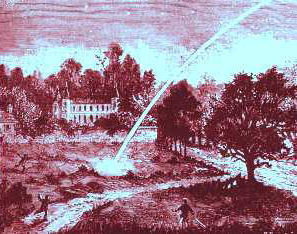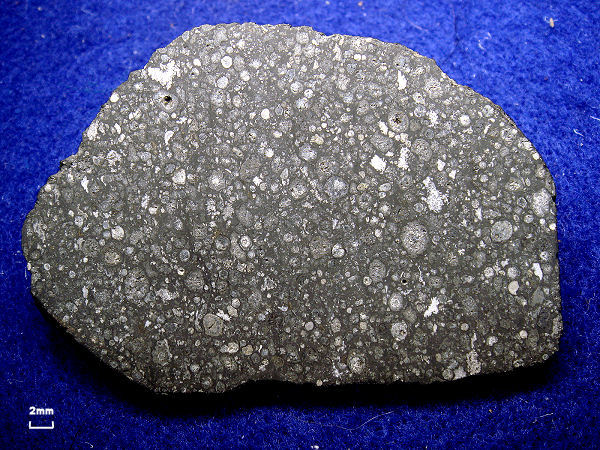|
Allende, CV3, carbonaceous
chondrite, 28.33 grams, fusion crusted full slice.
It fell over the Mexican
state of Chihuahua on February 8, 1969, at 01:05 local time (07:05 GMT) and is
the largest carbonaceous chondrite ever found on Earth.
Carbonaceous chondrites have
varying but near solar nonvolatile chemical compositions. They contain carbon
in the range 0-4 weight percent (wt. %) as well as water/OH (0-13 wt.% in
hydrated minerals) and all other biogenic elements (e.g., nitrogen,
phosphorous, sulfur). They also contain presolar minerals that were not formed
in our solar system. These include moissanite and tiny nanodiamonds.
These minerals provide
insights into processes occurring in other stellar environments prior to the
formation of our solar system.
The above specimen of Allende
contains an abundance of primary structures - Calcium aluminum inclusions
(CAI's) with interstellar grains, chondrules, refractory and ultrarefractory
inclusions. Carbonaceous chondrites also contain carbonates, graphites, and
organic compounds such as amino acids.
Each specimen of Allende is
a whole classroom of study material and is often times the centerpiece of a
meteorite collection..
This specimen is available
for purchase, see
Allende
Listing
Image copyright 2024, New
England Meteoritical Services |
| |
|













